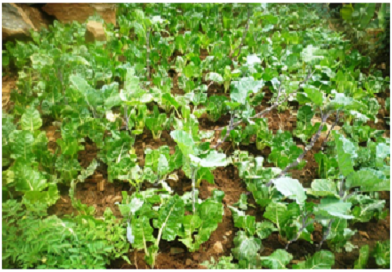Food Security and livelihoods
Food Security and livelihoods
Food is an immediate and basic need for all people – although different people may have varying food needs and preferences. A failure to access sufficient and healthy food creates a risk to life, suffering and the stigma of hunger and dependency. MISE contributes to saving lives, protecting livelihoods and seeking durable solutions by upholding the Right to Food and supporting displaced persons to attain food security.
Principles
MISE’s Food Security activities are conducted in accordance with the principles that:
- Highly vulnerable individuals or households should be prioritized
- Activities should promote nutritional wellbeing and health in families and households
- Activities should promote access to essential services with a particular reference to basic education (e.g. school feeding, vouchers)
- Activities should promote environmental conservation by supporting the development of livelihoods that conserve natural assets (especially soils, water and forestry)
- Activities must assess and respond to the different roles women and men fulfill in the household economy and in caring for the broader family in all phases – and ensure women are included in programme benefits
- Activities will ensure equitable access to registration,credit, land and other productive assets, and control and use of assets and resources.
Scope
MISE will respond to food security needs in different phases of crisis and emergency. The phases and their corresponding activities are:
Acute Emergencies:
In an acute emergency MISE will respond rapidly to facilitate access to daily food levels sufficient to provide a healthy and well balanced diet.
The initial focus shall be on:
- General food distributions (GFD)
- General distribution of non-food items (NFI)
- Distribution of supplementary foodstuffs where there are specific dietary risks
- Distribution of cash and/or vouchers
- Livelihood support to households to reduce distress sale or consumption of key productive assets such as land, animals, tools, and seeds
- Support to host families to reduce burdens of hosting
Chronic or Protracted Crisis:
- Targeted support to extremely vulnerable individuals or households for continued direct food and welfare support
- Assisting beneficiaries in resuming economic activities to enhance food security and reduce dependence.
- Measures to mitigate negative environmental impacts of mass displacement
- Support to public works to generate employment opportunities and renovate public infrastructure
Early Recovery/Durable Solutions:
- Provision of cash grants to support welfare needs during return movement
- Negotiation of access to means of production such as land or employment upon resettlement or return
- Provision of critical inputs to support re-settlement and re-establish the basis of production
- Provision of temporary assistance for extremely vulnerable individuals or families in the period before production can be realized.
Approach
whilstprioritizing emergency response to immediate needs, MISE’s approach to Food Security will be grounded in an appreciation of long-term needs and the search for durable solutions from the initiation of programming. MISE’s approach is:
- To base income-generating and livelihood interventions on a thorough analysis of household economies and local markets.
- To promote the most appropriate response with explicit inclusion of the possibilities of use of cash transfer programmes (particularly in urban environments and well developed economies).
- To ensure that beneficiaries are well informed about entitlements and processes of targeting and dispersal to ensure understanding, acceptance and local support for programmes.
- To design programmes to ensure interaction and cooperation between displaced and host communities to create shared interests and mutual benefit.
- To focus on the household as the unit of economic activity.
- To factor in seasonality to all food security planning, including activity schedules, scope, scale, and targeting of beneficiaries.




